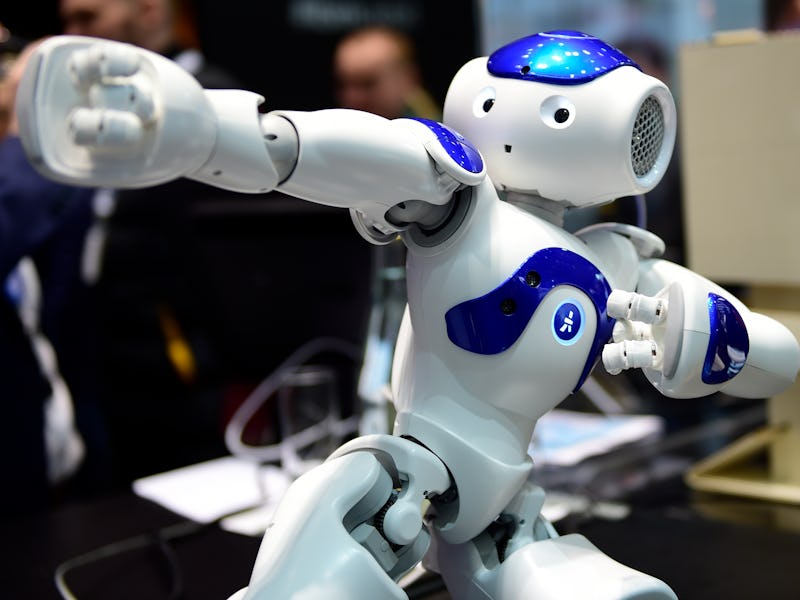What More Agile Robots Could Mean for Society
Will robots ever break their repetitive nature?

Robots are already highly useful for industry — and increasingly so for consumers in a variety of ways.
Today’s robots are adept at doing the same thing over and over (and over again) very effectively and efficiently. This makes them extremely valuable for cost-efficiently performing the same industrial process 500 or 10,000 times, for example. They are very consistent, and they do not get tired.
But when it comes to being agile enough to respond to a consumer’s varied and unpredictable needs, robots often struggle. Getting a robot to perform even a simple task is very complex — so laborious and costly that it is almost never worth it. Robots are used in today’s consumer products only to perform processes that are repeatable with little variation. As a consequence, if a consumer wants a customized product, it is probably not going to be cost-efficient for a company to employ a robot in producing that item.
We are getting there, though. Key steps are being taken to make a robot’s turnover from one task to another much quicker and cheaper. We are a long way away from “self-aware” robots possessing human-like abilities to observe, perceive and adapt. But recent scientific and technological advances are making it feasible to reprogram a robot on the fly and retask it to do something different. Such robots with the ability to perform simple logic and adjust accordingly—even when those steps are not explicitly defined in the robot’s programming—are in the foreseeable future.
Standardizing a Logic-based, Robot-interpretable Language
Different domains often use the same term to mean different things or use different terms to mean the same thing. Even the term “agility” has different meanings in different domains. For legged robots, it refers to their ability to move across uneven surfaces while keeping its balance. For manufacturing robots, it refers to the ability for a robot to accomplish its goal while adapting to ever-changing environments. Inconsistent terminology makes it difficult to share advances across the landscape of robot R&D and holds back advances that could increase the use of robots in consumer products.
A group of more than 160 professionals representing more than 20 nations and multiple backgrounds, working under the auspices of the IEEE Standards Association (IEEE-SA), has developed IEEE 1872, IEEE Standard Ontologies for Robotics and Automation, a standard that precisely defines the concepts of a robot’s knowledge representation, supports clearer robot-to-robot and human-to-robot communication, helps simplify programming and extends a robot’s information processing and reasoning capabilities. IEEE 1872 specifies a logic-based, robot-interpretable language—an “ontology”—for modeling generic concepts and their definitions, attributes, constraints and relationships within a domain. Artificial intelligence (A.I.), an area of technology innovation closely related to robotics, relies heavily on ontologies.
Published in 2015, IEEE 1872 was accorded the prestigious IEEE-SA Emerging Technology Award. IEEE 1872 also was cited in the October 2016 National Artificial Intelligence Research and Development Strategic Plan published by the U.S. National Science and Technology Council:
- Standards provide requirements, specifications, guidelines, or characteristics that can be used consistently to ensure that AI technologies meet critical objectives for functionality and interoperability, and that they perform reliably and safely. Adoption of standards brings credibility to technology advancements and facilitates an expanded interoperable marketplace. One example of an AI-relevant standard that has been developed is P1872-2015 (Standard Ontologies for Robotics and Automation), developed by the Institute of Electrical and Electronics Engineers (IEEE). This standard provides a systematic way of representing knowledge and a common set of terms and definitions. These allow for unambiguous knowledge transfer among humans, robots, and other artificial systems, as well as provide a foundational basis for the application of AI technologies to robotics. Additional work in AI standards development is needed across all subdomains of AI.[1]
Accelerating Realization of Robots’ Benefit to Humanity
The U.S. National Science and Technology Council strategic plan noted many areas where additional standards are needed to accelerate progress in the field: software engineering, performance, metrics, safety, usability, interoperability, security, privacy, and traceability.
Standards such as IEEE 1872 fuel understanding and interoperability across disparate application domains for robots, making it easier to leverage advances from one space across others. In this way, layers of redundant development are minimized, cutting the R&D costs that are ultimately passed on to consumers. IEEE 1872 and emerging standards are helping to expand the capabilities of robot-enabled, customizable consumer products